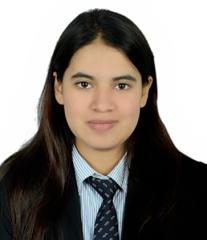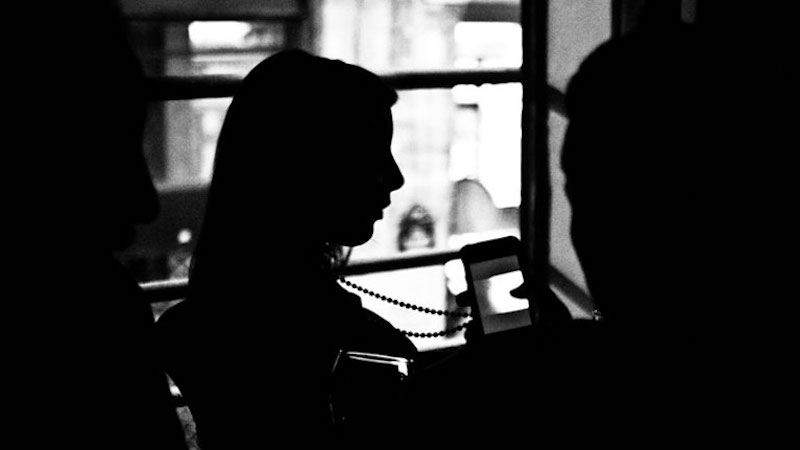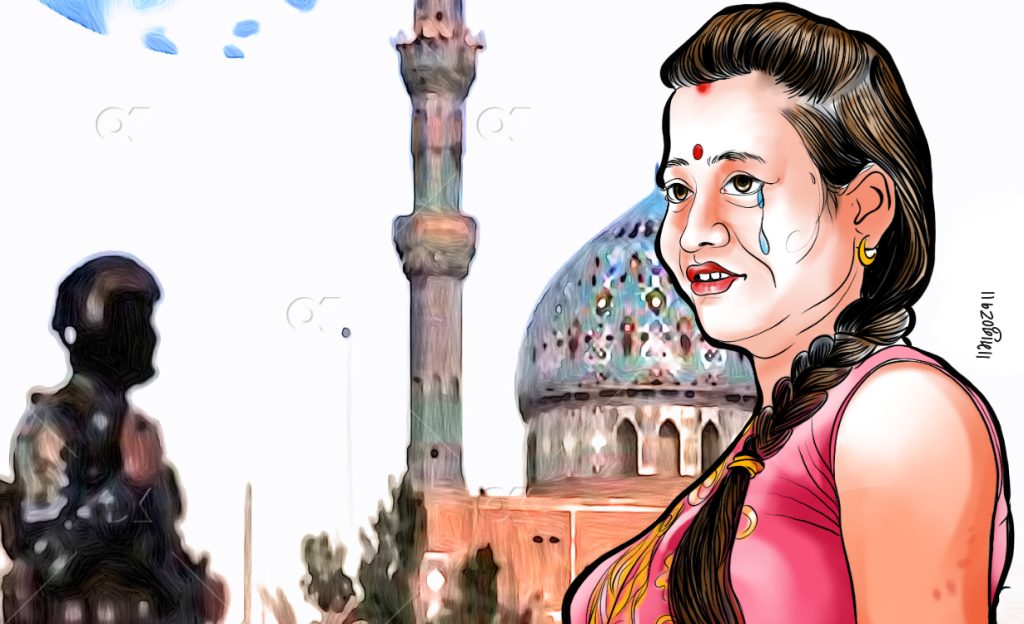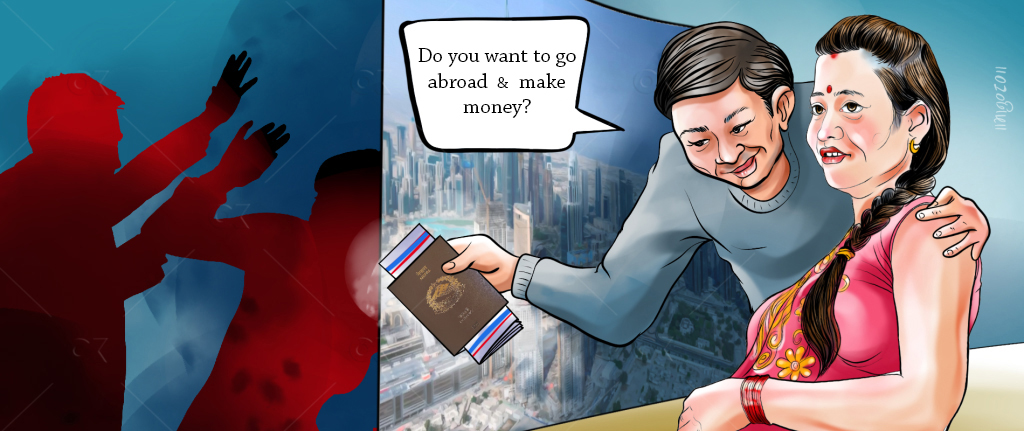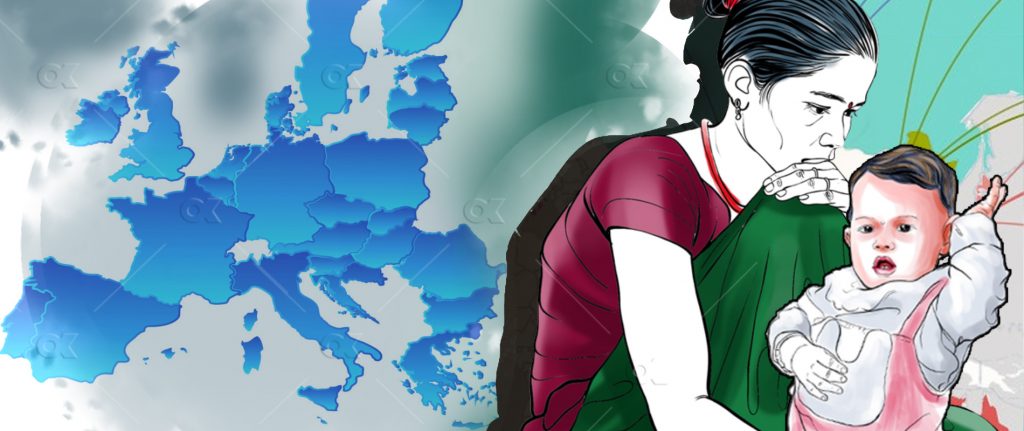
We reside in a world of 7.8 billion human population. The diversity and differences across the globe are huge and also pretty pleasing to witness. All countries have their frontier and laws governing the people settling in that very country.
Despite having significant laws, regulations and boundaries, crimes and misdeeds do occur in many parts of the world that pave the path for a society to deteriorate. Human trafficking in Nepal has been one of the increasing crimes due to the heavy migration trends.
Every year millions of people migrate to foreign countries generally for better employment opportunities and no doubt better lifestyles. In this course, people often become the victims of crimes such as human trafficking and smuggling. The victims usually come from a relatively low economic background (more women and girls), are uneducated and are easily manipulated and trafficked.
What is human trafficking?
Human trafficking is often termed with many synonyms such as modern-day slavery, organised crime against humanity, slavery, and enslavement. The illegal transport of humans from one place to another by the use of force and fraudulent scenarios to exploit is human trafficking.
Human trafficking is the recruitment, transportation, transfer, harbouring or receipt of people through force, fraud or deception, to exploit them for profit. Men, women and children of all ages and from all backgrounds can become victims of this crime, which occurs in every region of the world.
The traffickers often use violence or fraudulent employment agencies and fake promises of education and job opportunities to trick and coerce their victims as defined by the United Nations Office on Drugs and Crime (UNODC). The Rome Statute of the International Criminal Court in its Article 7 categorises human trafficking (Deportation or forcible transfer of population) in the category of Crime Against humanity.
Understanding human trafficking
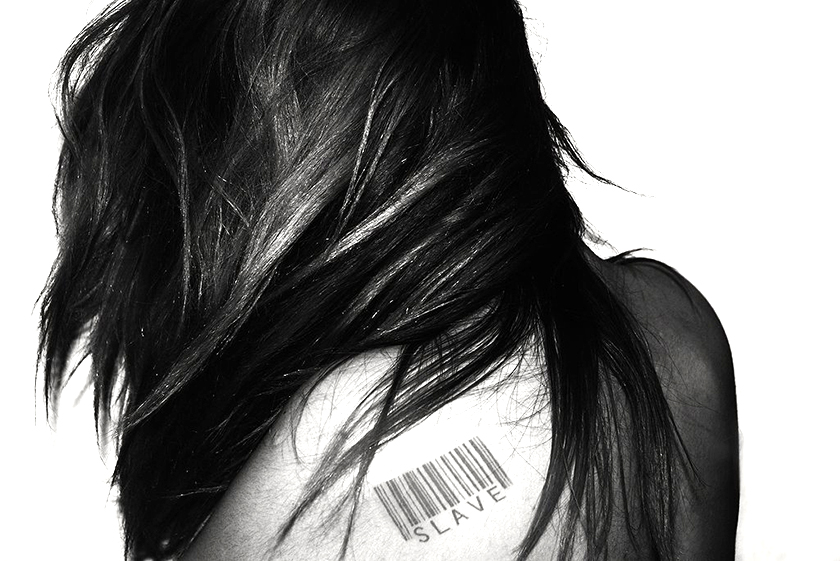
The act of transferring people from one place to another. Creation of fraudulent scenarios, and misuse of power. With the purpose or objective of exploiting. Trafficking in children needs only action and the purpose of exploitation. No requirement for the means.
The victims of human trafficking usually belong to an uneducated and low economic background who easily fall into the trap. People especially those preparing to migrate to foreign countries for jobs and better lifestyles are targeted by the traffickers.
More women and girls are often easily manipulated by traffickers who show them better but fake opportunities and finally sell them to brothels and households. It’s not that only women and girls get trafficked, the victims can be men, children and anyone. It’s just that the population of women and girls are more when it comes to trafficking.
But the traffickers have so many fake offerings to the people that many of them get easily trusted and get manipulated. Overall the victims can be anyone (children, asylum seekers, homeless youths, anyone) because if we observe the trends and ways the traffickers influence people, it’s difficult to trace out who can and who cannot be the victims. Also, as per the 2022 National Human Rights Report, around 40,300 Nepalis, most of them women and girls, were trafficked over the past two years, while around 1.9 million people are at risk for trafficking.
As there is no such specification of one type of victim, the traffickers also vary. The traffickers can be one’s own family members, business persons, brokers, or strangers. The traffickers have the mentality of involving the people in fraud scenarios, showing them fake opportunities and involving them in trafficking by the use of force and ultimately transferring the people from one place to another.
The traffickers target people from rural areas who are not exposed to enough opportunities and facilities. The people who lack education facilities and who need a strong economic source easily believe agents and traffickers who later sell them to a different world and the people turn out to be victims. During transferring the people, many crimes such as murder, prostitution, selling of organs, etc. occur.
Provisions related to human trafficking were included in Chapter 11 of the Muluki Ain 2020. With the increase of cases of human trafficking, the government enacted a separate act to control human trafficking i.e. Human Trafficking and (control) Act, 2043 and ultimately human trafficking and Transportation(control) Act, 2064.
The challenges and the way forward
Despite the enactment of the Human Trafficking and Transportation (Control) Act, of 2007 many cases of human trafficking are usually delayed or closed just because the victims are forced and threatened not to take any actions against the traffickers.
Similarly, the inconsistency of fixed punishments or fines or compensation when the cases are appealed has also halted the proper implementation procedures. The lack of a decision process also undermines the entire implementation of the act.
The victims are usually confused and often lack faith in the judicial process due to the lack of timely decisions from the courts. The act stipulates the punishment of up to 20 years of prison with a Rs 200,000 fine and provides necessary compensation to the victims.
Although we have the record of thousands of traffickers who have been arrested, there are very few numbers who have been convicted. This seems a very great issue that has to be addressed from the side of the government and the concerned authorities.
The cases about women and girls are more to be addressed and taken into consideration as the traffickers belong to the local criminal gang who have good contact and network with the Indian brothels where the innocent girls are sold and forced into prostitution.
The traffickers first make fake promises and then sell the girls for their economic gain. The other concerning issue is that many cases go unreported, which also needs great attention. There also seems problem with the proper recording of the statement of the witness or the victim.
Immediate actions are required to prevent the influence and intimidation of the traffickers towards the victims/survivors. The interpretations from the court regarding the liabilities must be clear enough. The stigmatisation associated with women victims must be addressed by using awareness programmes and campaigns.
Expansion of definitions and enactment of international conventions more effectively should be considered and highly prioritised. As human trafficking is an organised crime, there should be the establishment of various departments and authorities who can strictly inspect and investigate the trafficking activities in the probable areas and routes where trafficking occurs (specifically in the open border areas of Nepal and India).
Proper rehabilitation activities and support of the survivors are equally important to address this issue. The actions of the government in the implementation of the acts can be criticised in many other ways when it comes to human trafficking.
Human trafficking is the assault on human civilisation that requires attention regarding its control. Human trafficking breaches every form of human rights and ethical principles. Only when these sorts of crimes are controlled, people can enjoy their human rights and live with freedom.


